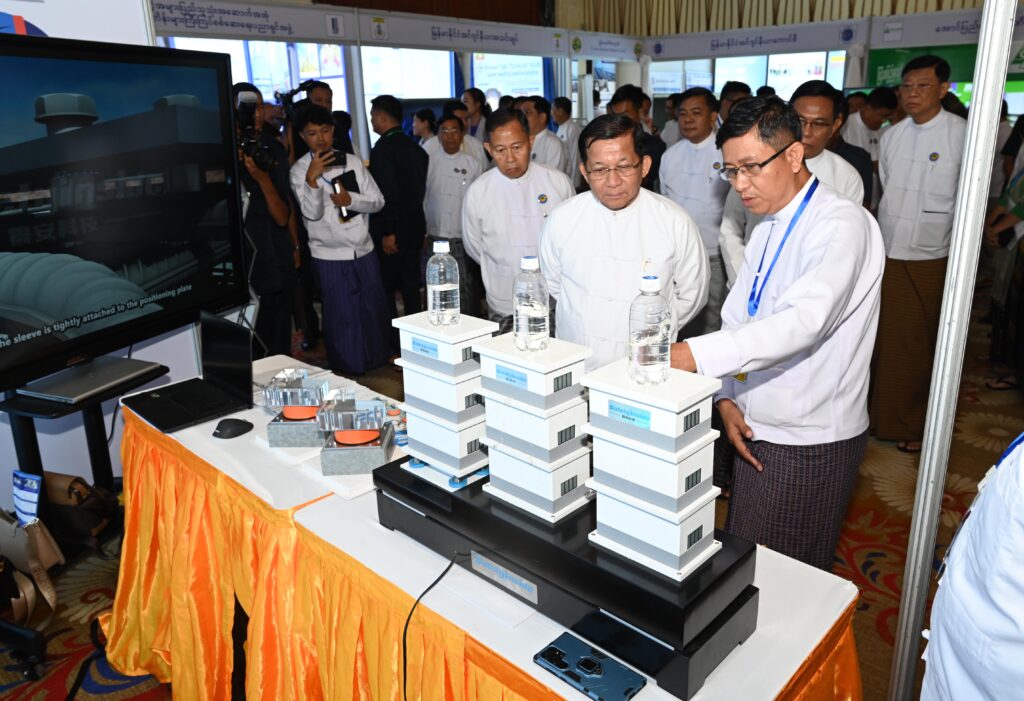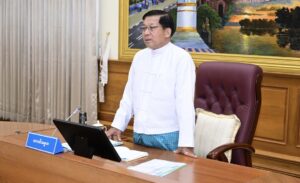Myanmar Holds Post-Earthquake Technical Forum to Strengthen Earthquake-Resilient Infrastructure

Yangon, The Gulf Observer: A high-level Post-Earthquake Technical Forum commenced yesterday at the Mingala Thiri Hotel in Nay Pyi Taw under the theme “Technically Reviewing Post-Earthquake Construction and Renovation Process and Preparing Potential Technical Challenges in the Future.” The forum was formally inaugurated with a keynote address by Senior General Min Aung Hlaing, Chairman of the State Administration Council and Prime Minister of Myanmar.
Marking the fourth month since the devastating Mandalay earthquake, participants—including government officials, engineers, and experts—observed a moment of silence to honor the lives of 3,739 monks and civilians who perished in the disaster. A documentary video reflecting the scale of destruction and the ongoing recovery efforts was also presented.
In his opening speech, the Senior General emphasized the critical importance of earthquake-resistant infrastructure in Myanmar, especially in light of lessons learned from other quake-affected nations such as Japan, China, and Indonesia. He stated that Myanmar must strive to adopt high-quality construction materials and advanced engineering technologies to construct skyscrapers, high-rise buildings, and resilient public structures.
The forum aims to facilitate open, expert-driven discussions to identify practical solutions for building earthquake-resistant infrastructure in both urban and rural areas.
“Only when all levels of stakeholders within the construction industry collaborate systematically and with full awareness can we build infrastructure that protects lives and withstands future seismic threats,” the Senior General remarked.
He stressed that all infrastructure must meet earthquake-resilient standards and quality benchmarks, calling for strict compliance with the Myanmar National Building Code (MNBC). The 2025 edition of the MNBC, currently being finalized, is being developed based on the latest geoscientific data from the Mandalay earthquake. It will feature enhanced seismic zone maps, building failure analyses, and tailored seismic load calculation methods.
Highlighting the financial commitment of the state, the Senior General announced that MMK 500 billion has already been provided to support reconstruction efforts, with an additional MMK 2 trillion allocated for continued recovery and rehabilitation across affected areas.
The Mandalay earthquake led to the destruction of more than 50,000 residential buildings, as well as critical infrastructure including roads, bridges, schools, hospitals, religious institutions, and industrial facilities.
The Senior General extended appreciation to local and international experts, architects, and engineers for their support in conducting post-quake assessments, overseeing high-rise and public-use building projects, and formulating Standard Operating Procedures (SOPs) for disaster response.
He also recognized the coordinated efforts of the Ministry of Construction, Myanmar Engineering Council, Myanmar Architects Council, Federation of Myanmar Engineering Societies, Myanmar Earthquake Committee, and related organizations in revising and strengthening the national building standards. Honorary certificates were presented to chairs and representatives from these bodies during the forum.
The Senior General further urged all stakeholders—including developers, structural engineers, material suppliers, and regulators—to work in close cooperation during and beyond the forum to ensure that the country’s future infrastructure is both safe and sustainable.
Among those in attendance were SAC Vice Chairman and Deputy Prime Minister Vice-Senior General Soe Win, Council Joint Secretary General Ye Win Oo, union-level dignitaries, union ministers, senior military officials, foreign and local experts, and representatives from engineering and architecture organizations.
The forum, which will continue until July 29, is expected to produce technical recommendations and a strategic roadmap for national infrastructure resilience in anticipation of future natural disasters.


